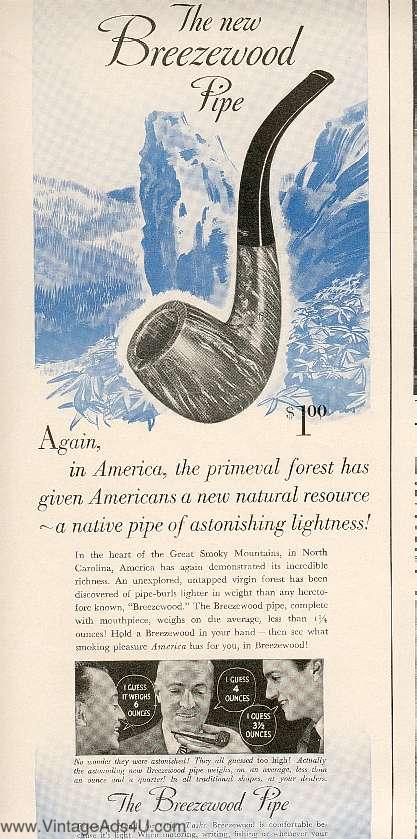I think I just figured out:
*why US Pipemakers, Kaywoodie and others, stopped using Manzanita, AKA "Mission Briar", after World War II;
* why they distanced themselves from domestic briar production after the war when they began to stamp every single pipe "Imported Briar", rather than just "Briar" or "Bruyere"; and
* why nobody in the US ever dared to use domestic briar, ever again.
Guilt-by-association.
You see, when imported briar started getting scarce during WWII, US pipemakers started looking for alternatives, and they were basically split into two camps: those who started using manzanita and those who started using mountain laurel.
Ever hear of a pipemaker called Breezewood? Well, Breezewood was one of the companies using mountain laurel as a substitute for Mediterranean briar, just like Monterey Pipes was one of the companies using manzanita, or "Mission Briar".

Breezewood quietly closed its doors after the war because, as it turns out, all parts of the mountain laurel (Important: Not Manzanita) are "dangerously poisonous".
Mountain laurel contains a powerful neurotoxin that, when ingested, causes convulsions, paralysis, and death within a matter of about six hours.
And somewhere along the way -- I'm guessing way too late in the game for some -- folks using mountain laurel as a substitute for Mediterranean briar figured this out.
I'm just gonna bet money that people started getting sick, maybe even dying: people growing and harvesting mountain laurel, people in pipe factories breathing all that mountain laurel dust, and possibly even folks who smoked those mountain laurel pipes, later on down the line.
People caught on. Maybe there were even some items in the news. And suddenly US pipemakers couldn't put enough distance between themselves and mountain laurel pipe production fast enough.
The phrase "Imported Briar" became all the rage, and never again did US pipemakers attempt to grow or harvest briar -- any kind of briar -- ever again.
Just for the sake of reference, though, I should point out that nearly every single product on the market, right up until the 70s contained lead, asbestos, and so on. Heck, doctors used to put mercury thermometers in our mouths and not think a thing about it. A lot of this stuff, we just didn't know any better.
But anyway, manzanita got caught up in all of this mess. It's not poisonous, and it makes a fine smoking pipe, but who would want to take the risk, after that mountain laurel fiasco, huh?
You see, it's kinda like mushrooms and toadstools. Nobody wants to pick mushrooms when there's the significant risk that you might pick a few toadstools by mistake.
Why not just make soup and let other people worry about which one is a mushroom and which one is a toadstool?
Something like that, anyway.
So, just to recap, here:
* mountain laurel is poisonous;
* manzanita is NOT poisonous (somehow I feel like I am not emphasizing that enough)
* and after the war, the use of manzanita briar ended and the phrase "Imported Briar" became popular because US pipemakers had to disassociate themselves from the wartime practice of using mountain laurel as a substitute for Mediterranean briar.
So what do you think? Does that sound plausible?
And where is my deerstalker hat and my calabash pipe? I think I deserve a smoke.
